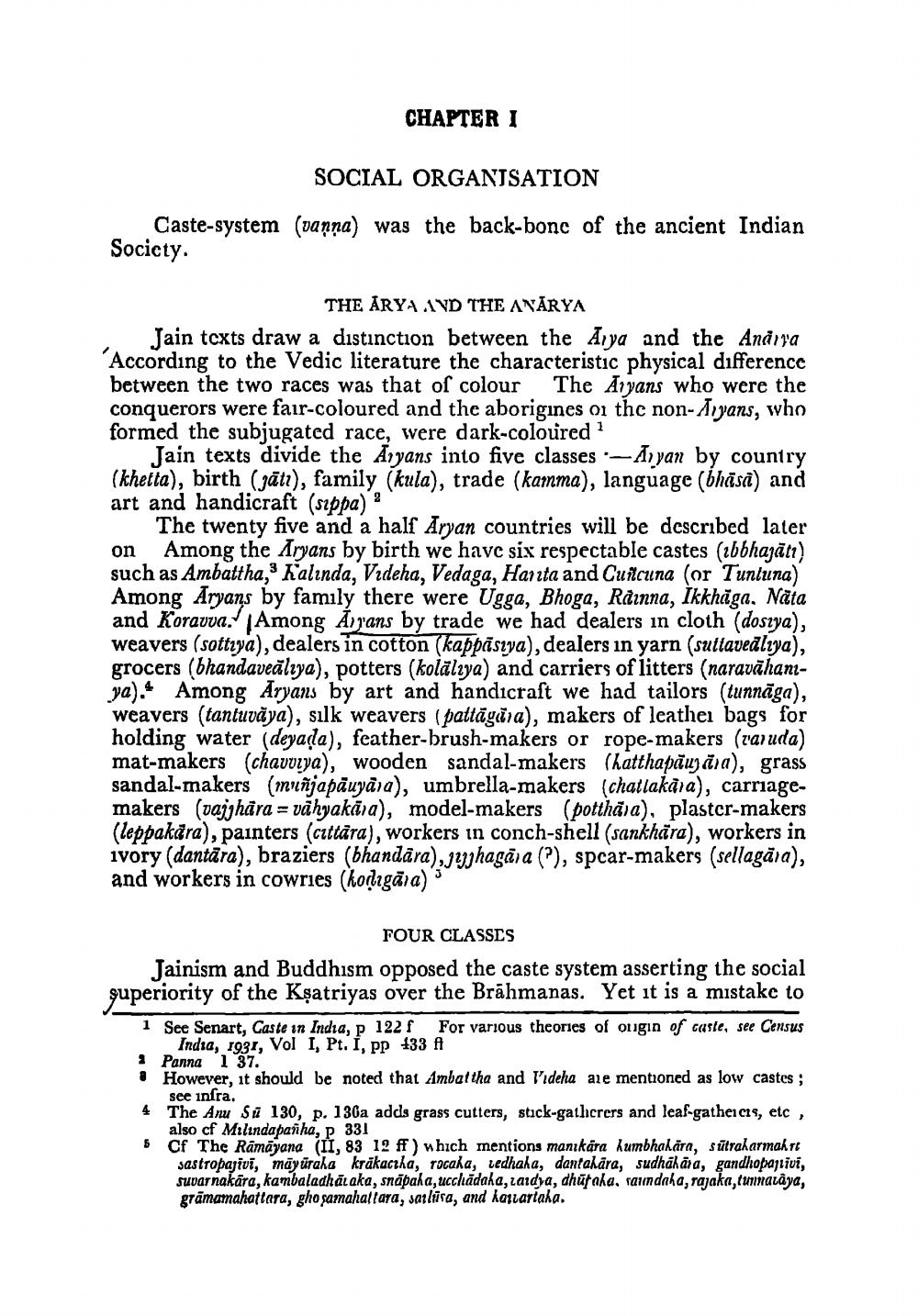________________
CHAPTER I
SOCIAL ORGANISATION Caste-system (vanna) was the back-bone of the ancient Indian Society.
THE ARYA AND THE ANĀRYA Jain texts draw a distinction between the Arya and the Andrra According to the Vedic literature the characteristic physical difference between the two races was that of colourThe Aryans who were the conquerors were fair-coloured and the aborigines on the non-Aryans, who formed the subjugated race, were dark-coloured
Jain texts divide the Aryans into five classes --Aryan by country (khetta), birth (jāti), family (kula), trade (kamma), language (bhāsa) and art and handicraft (sippa)
The twenty five and a half Aryan countries will be described later on Among the Aryans by birth we have six respectable castes (2bbhajāti) such as Ambattha, Kalında, Videha, Vedaga, Harta and Cuilcuna (or Tuntuna) Among Aryans by famıly there were Ugga, Bhoga, Ràinna, Ikkhaga. Näta and Korava.' Among Arrans by trade we had dealers in cloth (dosiya), weavers (sottiya), dealers in cotton (kappasıya), dealers in yarn (sutlavedliya), grocers (bhandaveālıya), potters (kolālıya) and carriers of litters (naravāhanya). Among Aryans by art and handicraft we had tailors tunnāga), weavers (tantuvāya), silk weavers (pattāgara), makers of leather bags for holding water (deyada), feather-brush-makers or rope-makers (rar uda) mat-makers (chavulya), wooden sandal-makers (hatthapàu āra), grass sandal-makers (muñjapāuyāja), umbrella-makers (chatlakāra), carriagemakers (vajihara = vähyakāra), model-makers (potthåja), plaster-makers (leppakära), painters (cittāra), workers in conch-shell (sankhāra), workers in ivory (dantāra), braziers (bhandāra), Jujhagara (?), spcar-makers (sellagăra), and workers in cowries (kordıgāra)"5
FOUR CLASSES Jainism and Buddhism opposed the caste system asserting the social superiority of the Ksatriyas over the Brāhmanas. Yet it is a mistake to 1 See Senart, Caste in India, P 122 f For various theories of ouigin of caste, see Census
India, 1931, Vol I, Pt. I, pp 33 ft Panna 1 37. # However, it should be noted that Ambattha and l'ideha are mentioned as low castes ;
see infra. The Anu Su 130, p. 130a adds grass cutters, stick-gatherers and leaf-gatherers, etc, also cf Mılındapanha, P 331 Cf The Rāmāyana (II, 83 12 ff) which mentions manikära kumbhakāra, sūtraharmahti sastropajivi, māyüraha krākacha, rucaka, vedhaha, dantahāra, sudhāhāra, gandhopartivi, suvarnakāra, kambaladhālaka, snäpaka,ucchädaha, zaidya, dhufaha, raundaha, rajaka,tumnataya, grāmamahatlara, gho samahaltara, sarliisa, and hancartaha.




